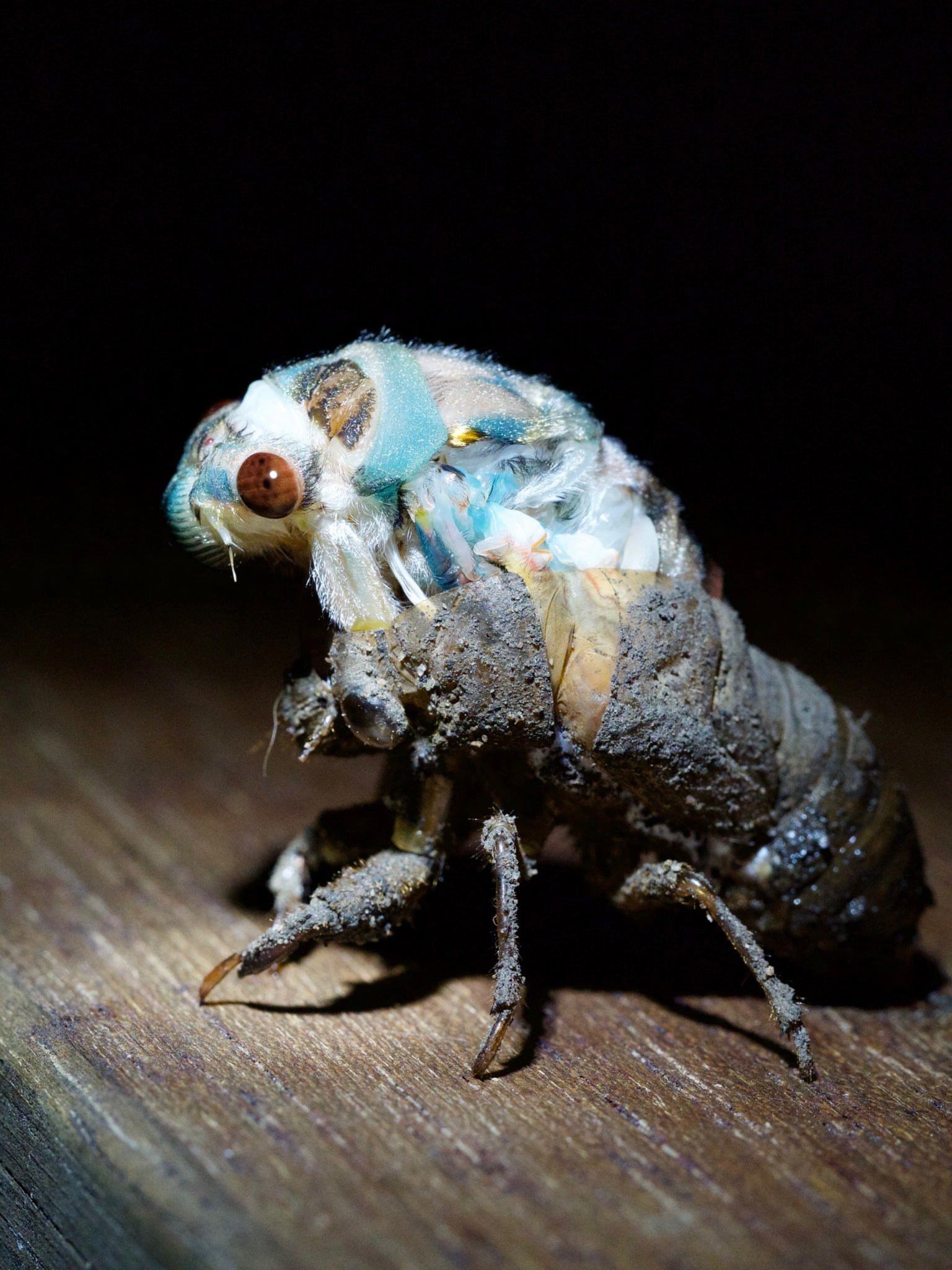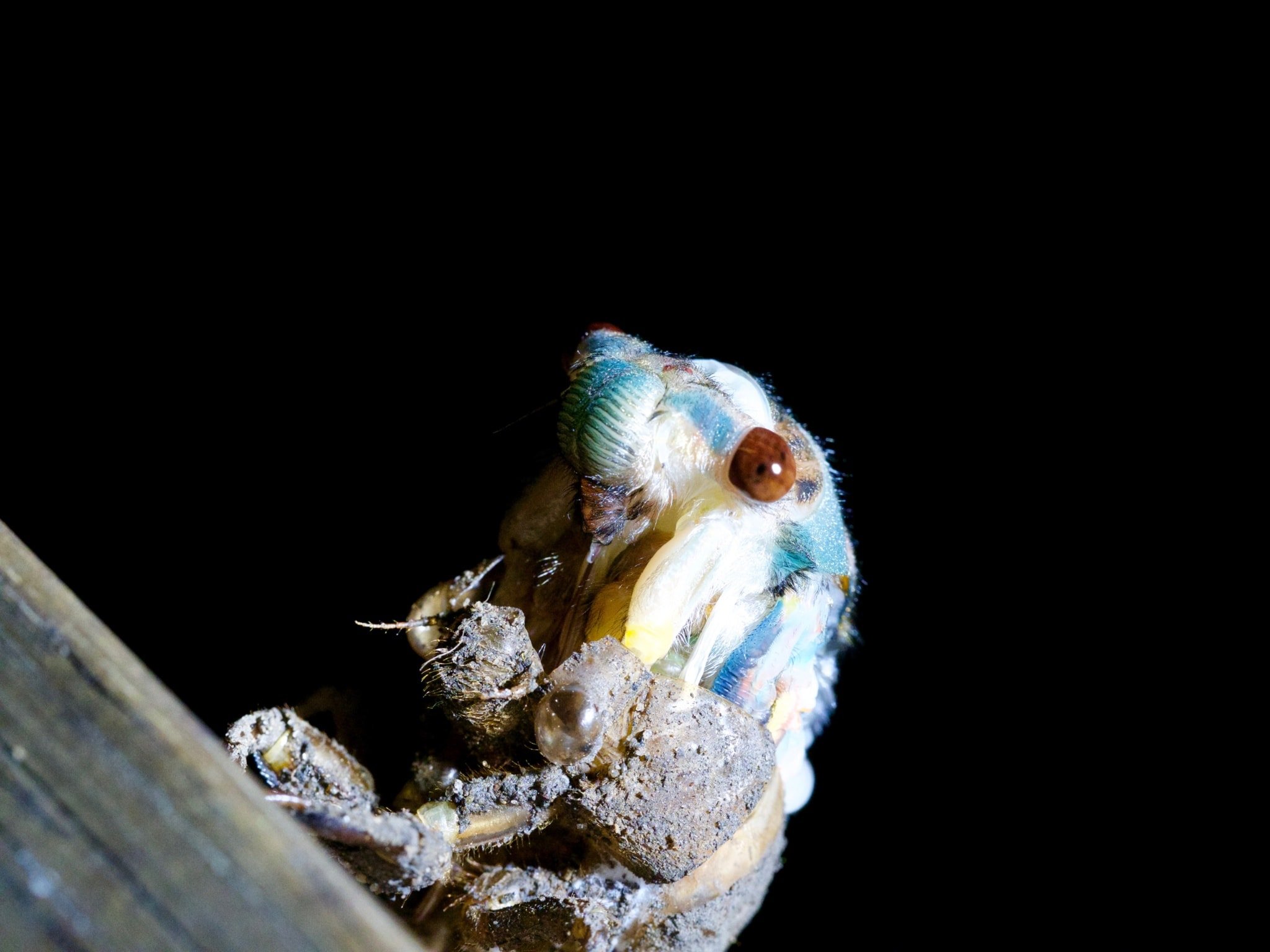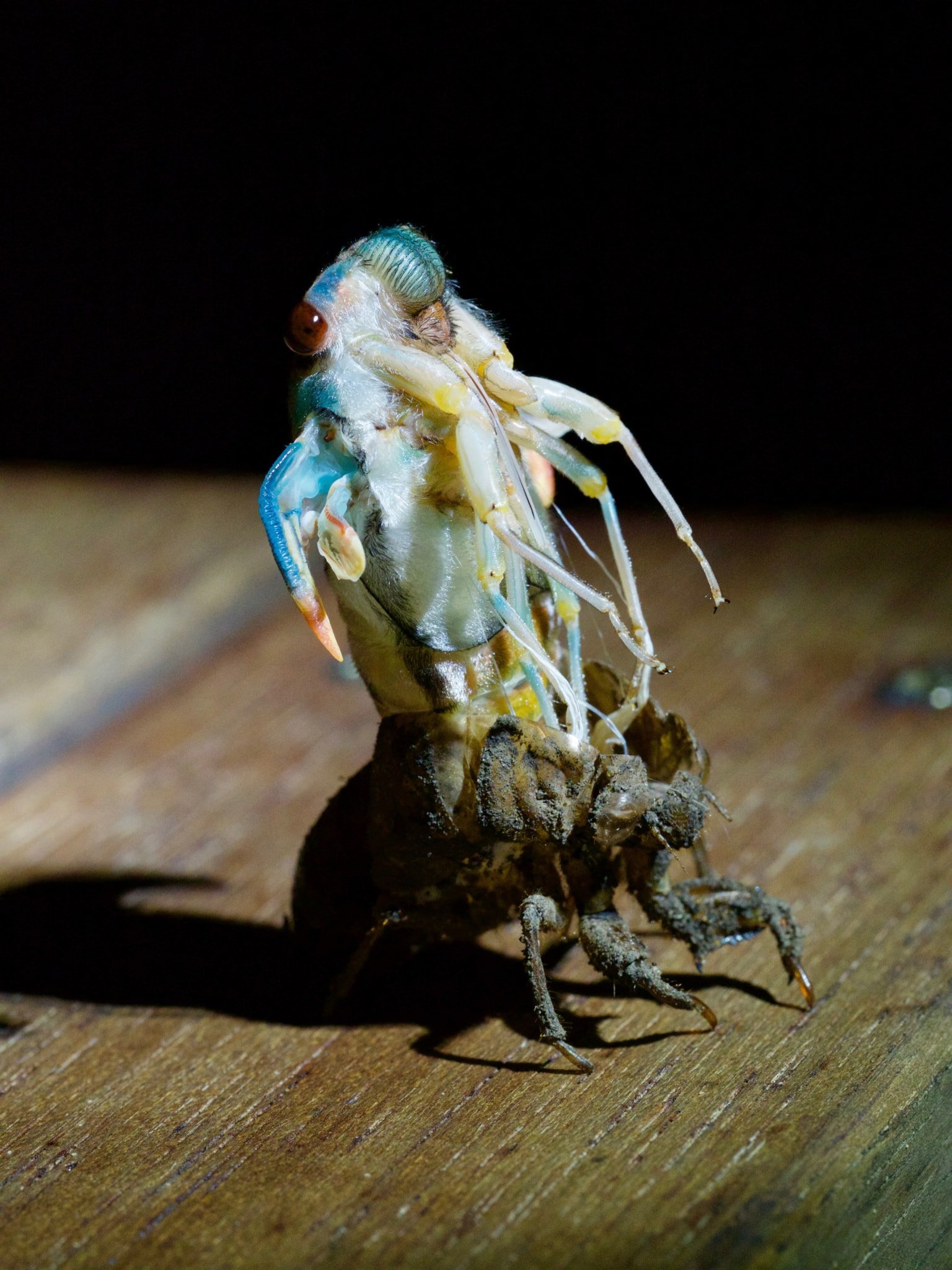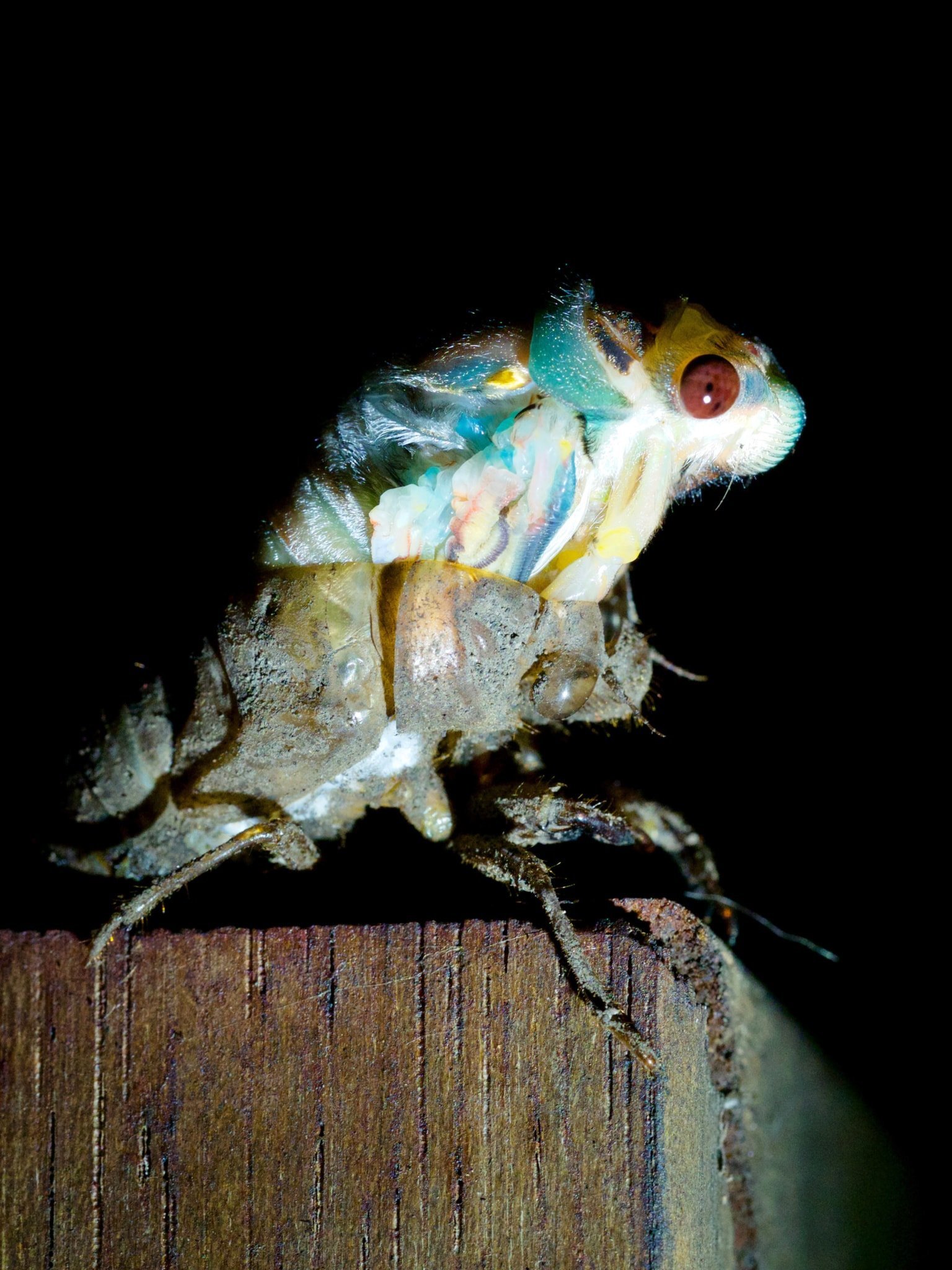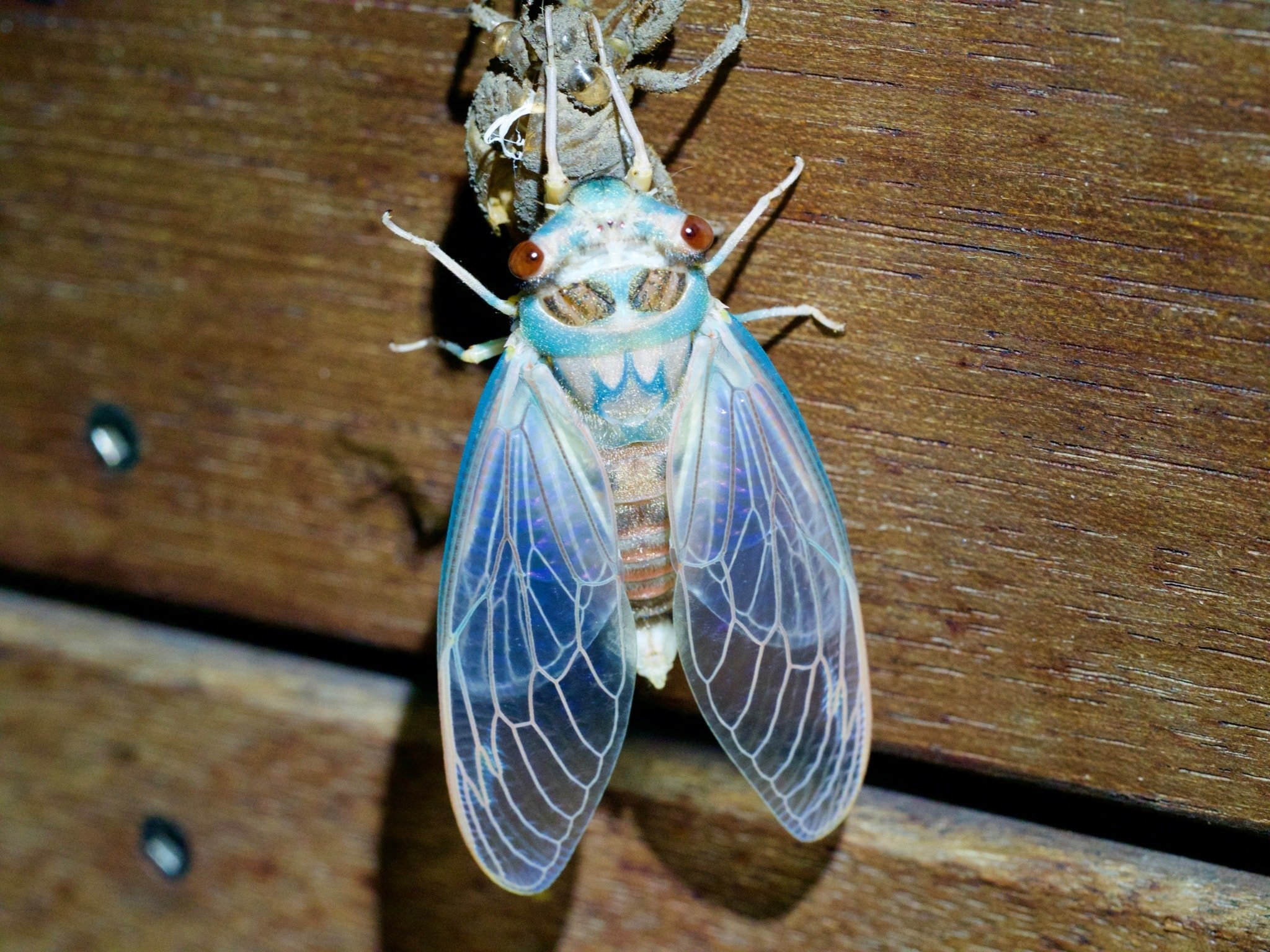In pictures: a cicada sheds its skin
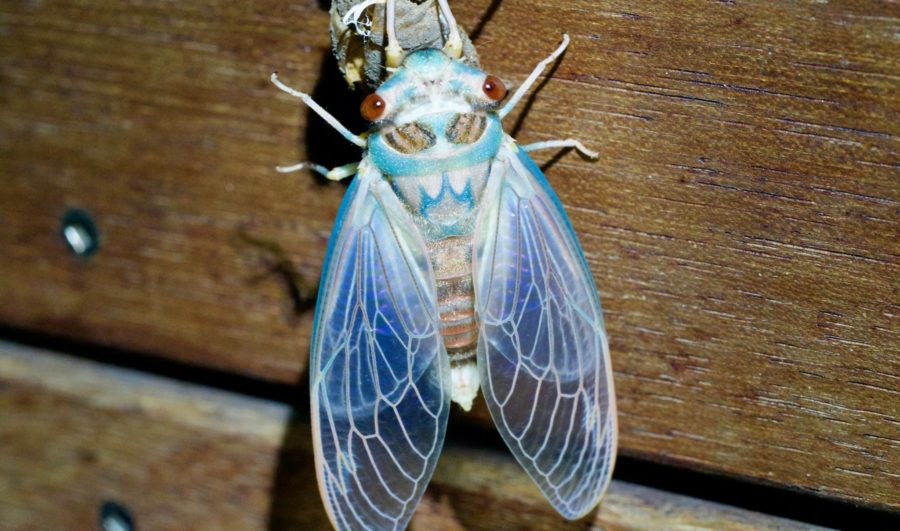
It’s the sound of summer, that pulsating, often ear piercing hum of hordes of cicadas calling for a mate. But in stark contrast, the final stage to adulthood is an almost silent, arduous process. The nymph, dressed in that familiar brown outer shell, tunnels up and out of the ground where it has lived for several years. It begins its determined climb upwards; up trees, up walls, up any vertical surface where it will cling for the next hour or so. And this is where one of the most incredible but rarely seen transformations begins.
Locked in this final position, the cicada’s exoskeleton begins to split. Barely detectable vibrations and movements widen the split and the soft body of the emerging adult can be seen for the first time. But this is not a simple process and many things can go wrong. If the cicada does not free itself in time, the shell hardens around it and it is trapped, frozen, half changed. But if the moult proceeds as expected, the head is freed next and the face of its previous self sits like a mask just underneath.
And if that wasn’t strange enough, the cicada then arches its body backwards and hangs in that position, stretching its legs slowly in and out, waiting for them to harden. Once dry it will pull itself up in one motion, grabbing the old shell and freeing the remainder of its abdomen. Jutting out from the body are four small wing buds, which the cicada slowly inflates by pumping them with fluid. It stays like that until they harden enough to make its maiden flight; heading off to spend its final few weeks feeding and mating and if it is male, singing very, very loudly.
